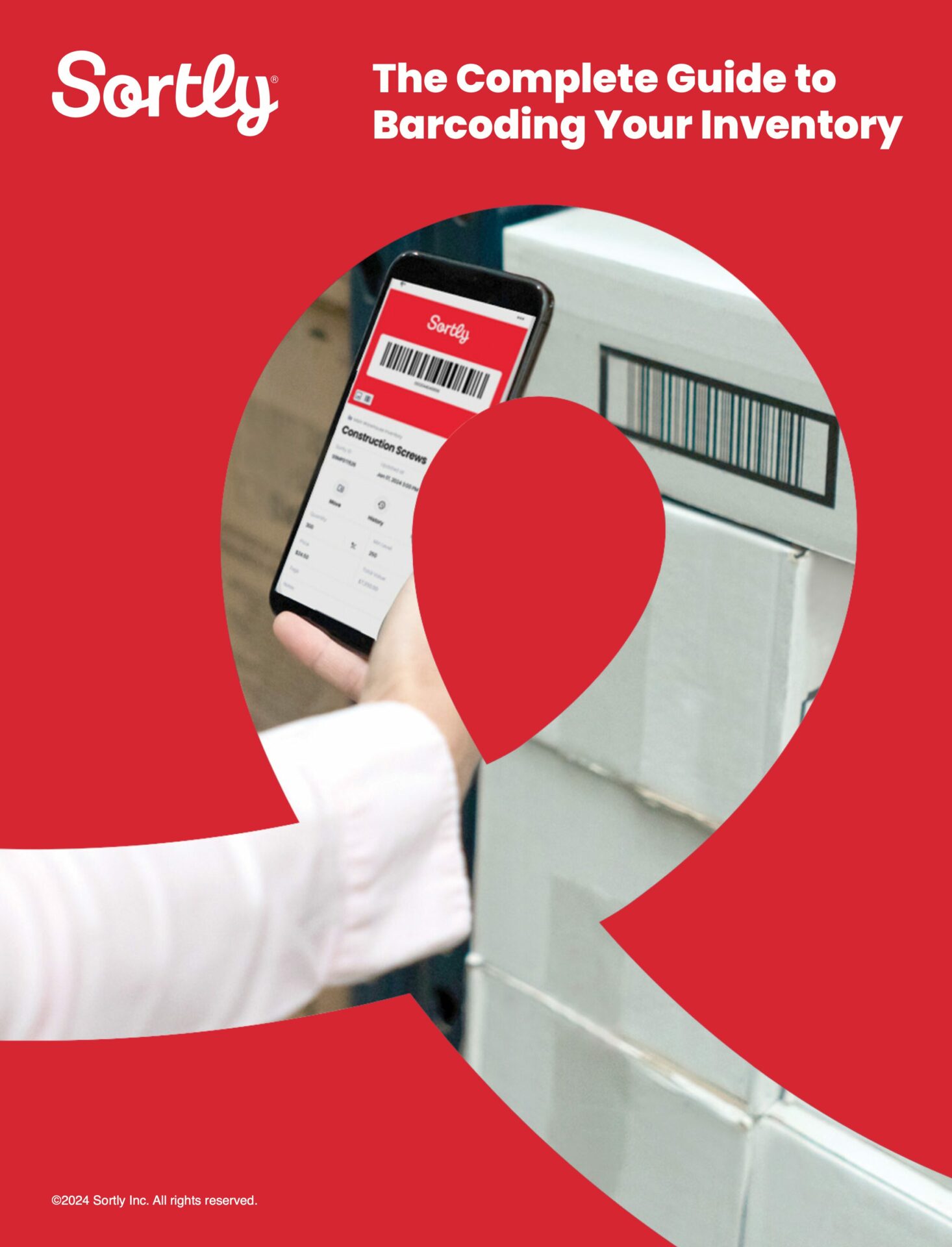Both RFID and barcode technologies can make inventory management a whole lot easier for your business. But when it comes to RFID vs barcode, what’s actually better? It depends on your company’s needs, wants, and budget.
In this article, we’ll define both RFIDs and barcodes, then touch on the pros and cons of each type of inventory coding system.
What is RFID?
RFID offers three versions to choose from: low frequency, high frequency, and ultra-high frequency. The lower the frequency, the closer the RFID reader must be to pick up the sensors.
Low-frequency RFID can be used for simple asset tracking, as items can be checked in and out with a simple scan.
RFID technology is also a part of our day-to-day lives—it’s not just for business owners. For instance, if you hover a badge over a reader to enter an office building or to press a button on an elevator, you’re likely using a low-frequency RFID sensor to do so. And if you’ve ever checked out a whole stack of books at once at the library, you can thank high-frequency RFID technology.
And in the country’s biggest warehouses, ultra-high frequency RFID is the gold standard. This allows teams to check in enormous boxes of inventory all at once, accurately and efficiently ensuring the right products are arriving in the right place.
What is a barcode?
There are several types of barcodes, including these three:
- 1D barcodes—the ones you’d see on a chocolate bar and other consumer goods, often created by the manufacturer or the seller
- SKU barcodes—barcodes customized by businesses to identify a unique stock-keeping unit (SKU)
- UPC barcodes—a UPC (universal product code) barcode is intended for external, universal use, and are set by GS1, a U.S.-based non-profit
Also of note: QR codes, which carry even more data than barcodes, are two-dimensional instead of one. These square “quick response” codes can be found on everything from clothing tags to restaurant menus and are easy to scan with smartphones.

Free Ebook: The Complete Guide to Barcoding Your Inventory
This easy, comprehensive guide will help you:
- Implement a barcode inventory system for your business
- Generate your own unique barcodes
- Practice perpetual inventory control with barcoding
What is the difference between an RFID and a barcode?
Want to know more? Here are some RFID negatives and positives, and some barcode pros and cons, too.
Pros of using RFID
Let’s start with the benefits of using an RFID system.
Can scan many items at once
One of the key benefits of RFID? The technology’s ability to scan many things at once. This time-saving, automated feature can help everyone from medical assistants to farmers account for hundreds of items in just a few seconds—all through radio waves.
Optimal inventory control
Because RFID technology has been designed to keep track of individual items, even if they’re not visible or are moving around quite a bit, it’s a perfect tool for practicing airtight inventory control. After all, RFID technology can sense when an item leaves a store or warehouse, provided the RFID tag remains in place.
Can track inventory piece by piece
Usually, the same barcode is assigned to all identical items in an inventory. For example, there’s one barcode on several sets of plaid pajamas. But with RFID, each individual item has a unique RFID. That can come in handy if your business experiences chronic inventory shrinkage or stocks very high-value items.
Cons of using RFID
Now, let’s face the RFID negatives.
Expensive to set up
Creating an RFID management system is a major investment, and for many businesses, it simply won’t pay off. Why is it so expensive? First, an RFID tag features a chip that’s way more expensive than a simple barcode. That’s because barcodes can be generated easily using a free or low-cost inventory app.
Plus, RFID readers can cost ten times as much as barcode readers. In fact, equipment your business already owns—like a smartphone—can read barcodes and QR codes at no extra cost.
Hard to integrate with existing systems
You already know that RFID can get expensive. But there’s another factor adding to the sizable costs: Integrating your RFID data with your inventory management system.
Whether you track inventory on a sheet of paper, a spreadsheet, or via inventory software, you’ll need to integrate your RFID system with your inventory system—and that’s not always possible or affordable.
Only works for certain businesses
If RFID can read a whole bunch of tags at once, you’d think department stores and supermarkets would use it for easy checkout. But RFID doesn’t always work perfectly when items are odd sizes or there’s a lot of metal in the scanning area, which can throw off the scanner.
And, as we mentioned earlier, tagging items can be costly. Since an RFID tag can cost anywhere from a dollar to more than thirty dollars, your business needs to have a good reason to adopt the system.
That’s why RFID is so prevalent in in-person retail stores—where the savings of preventing shoplifting outweigh the cost of setting up a robust RFID system.
Pros of using barcodes
Barcoding offers many advantages over RFID. It is a tried-and-true solution that many businesses rely on for their inventory tracking needs. Here’s why.
Affordable and easy to use
Barcodes are straightforward—you see one, you scan it, you perform the desired action. There’s no worrying that anything was missed on relying on complex and expensive RFID scanners to get things done.
Better yet, barcodes are remarkably inexpensive—and so are the scanners used to read them. Some inventory apps, like Sortly, let you scan barcodes and QR codes right from your smartphone or tablet. You can also sync external Bluetooth scanners with Sortly’s inventory system if you prefer.
Many items come with barcodes ready to scan
Businesses spend a fortune creating RFID tags, buying RFID scanners, and optimizing an RFID system. That’s not the case with barcodes. In fact, many items come with barcodes on them already, saving your business time and money.
Easy to generate custom barcodes
Implementing a barcode system is simple and straightforward. If your inventory includes unlabeled stock, creating unique barcodes (and QR codes) for your inventory is easy and inexpensive. Inventory software, including Sortly, allows you to create and print barcode labels in various shapes and sizes. Plus, you can add other key information to the label, including your company’s logo, an item’s SKU, or whatever else matters to your team.
All you need is a regular printer and Avery labels sold in office supply stores and online.
Can scan with existing hardware or a phone, tablet
If your business uses regular barcodes to manage inventory, smartphones, tablets, and external scanners can easily reader these codes. However, since RFID uses radio waves, there’s no getting around buying an external RFID scanner.
Cons of using barcodes
Of course, barcodes have their fair share of negatives, too.
All items of the same type have the same code
When you barcode your inventory, you’ll almost always give every item of the same type the same barcode. This can make it a little harder to pinpoint inventory, especially if it is high in value or a human error was made tracking its whereabouts.
Of course, you can always generate a unique barcode for your highest-value assets, like laptops sent out to employees.
Can only scan one item at a time
Finally, barcodes can only be scanned one at a time, and only when the barcode is completely visible. This does put a limit on how quickly your employees can check inventory in and out. Still, many businesses find that scanning barcodes is efficient enough, and appreciate the added confidence that comes with human oversight of their inventory as it changes hands.
Experience the simplest inventory management software.
Are you ready to transform how your business does inventory?
RFID vs. Barcode: What’s better for inventory management?
There’s a long list of RFID pros and cons, but the main focus is all about efficiency vs. expense. In fact, the RFID vs.barcode debate can only be settled by evaluating your unique business’s needs, restraints, and resources.
RFID is excellent at tracking lots of inventory at once—but it’s quite expensive and not a good fit for many companies. Barcoding is inexpensive, easy to understand, and can still save your business tons of time and stress. Plus, setting up a barcode inventory system takes a few minutes, whereas setting up an RFID system is a major investment.
About Sortly
Sortly helps you track, manage, and organize all your inventory—from any device, in any location. We’re an easy-to-use inventory solution that’s perfect for small businesses. Sortly builds inventory tracking seamlessly into your workday so you can save time and money, satisfy your customers, and help your business succeed.
With Sortly, you can track consumable inventory like supplies, parts, and raw materials, assets like equipment and machinery, and anything else that matters to your business. It comes equipped with smart features like barcoding & QR coding, low stock alerts, customizable inventory folders, smart reporting, and much more. Best of all, you can update inventory right from your smartphone—and so can your team.
Whether you’re just getting started with inventory management or you’re an expert looking for a more efficient solution, we can transform how your company manages inventory—so you can focus on building your small business. That’s why over 15,000 businesses globally trust us as their inventory management solution.
Start your two-week free trial of Sortly today.




